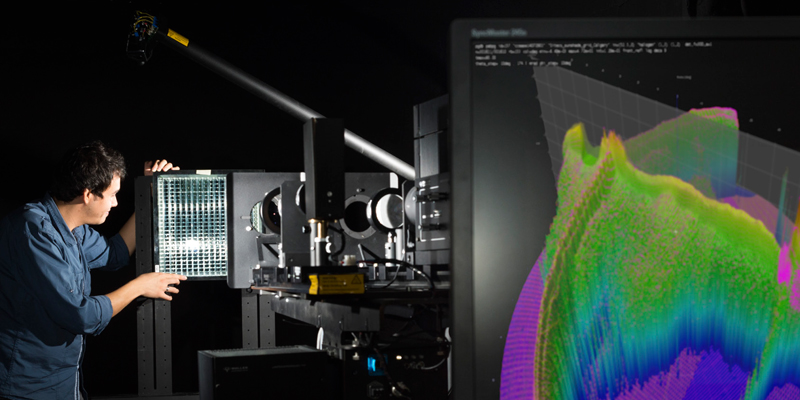Downloads
DOI:
https://doi.org/10.7480/jfde.2017.2.1743Keywords:
daylight simulation, data-driven model, BSDF, Radiance.Abstract
Daylight Redirecting Components (DRCs) guide daylight to zones with insufficient daylight exposure. They reduce energy demand for lighting, heating and cooling, and improve visual and thermal comfort. The data-driven model in Radiance is a means to model DRCs in daylight simulation. Rather than internal optical mechanisms, their resulting Bidirectional Scattering Distribution Function (BSDF) is replicated.
We present models of two DRCs that are generated from measurements. The impact of the following three necessary steps in the generation of data-driven models from measured BSDF shall be evaluated:
1) interpolation between measurements at sparse sets of incident directions; 2) extrapolation for directions that cannot be measured; 3) application of a directional basis of given directional resolution.
It is shown that data-driven models can provide a realistic representation of both DRCs. The sensitivity to effects from interpolation differs for the two DRCs due to the varying complexity of their BSDFs. Due to the irregularity of the measured BSDFs, extrapolation is not reliable and fails for both tested DRCs. Different measurement and modeling protocols should be applied to different class systems, rather than aiming at a common low-resolution discretization.
How to Cite
Published
Issue
Section
License
Copyright (c) 2017 Lars Oliver Grobe, Stephen Wittkopf, Zehra Tugce Kazanasmaz

This work is licensed under a Creative Commons Attribution 4.0 International License.
Authors or their institutions retain copyright to their publications without restrictions.
References
Appelfeld, D., McNeil, A., & Svendsen, S. (2012). An hourly based performance comparison of an integrated micro-structural perforated shading screen with standard shading systems. Energy and Buldings, 50, 166-176.
Apian-Bennewitz, P. (2010). New scanning gonio-photometer for extended BRTF measurements. In Proceedings SPIE, 7792
Reflection, Scattering, and Diffraction from Surfaces II, 77920O-77920O-20. Brussels: International Society for Optics and Photonics.
de Boer, J. (2005). Modelling indoor illumination by CFS based on bidirectional photometric data. Technical report, International Energy Agency Task 31.
Gago, EJ., Muneer, T., Knez, M., Köster, H. (2015). Natural light controls and guides in buildings. Energy saving for electrical lighting, reduction of cooling load. Renewable and Sustainable Energy Reviews, 41, 1–13.
Greenup, P., Edmonds, I., and Compagnon, R. (2000). Radiance algorithm to simulate laser-cut panel light-redirecting elements. Lighting Research and Technology, 32, 49–54.
Grobe, LO., Müllner, K., & Meyer, B. (2015). A novel data-driven BSDF model to assess the performance of a daylight redirecting ceiling panel at the Calgary Airport Expansion. In Proceedings PLDC 5th Global Lighting Design Convention, 240-243. Rome: VIA-Verlag.
Grobe, LO. (2017). Computational combination of the optical properties of fenestration layers at high directional resolution.
Hoffmann, S., Lee, ES., McNeil, A., Fernandes, L., Vidanovic, D., & Thanachareonkit, A. (2016). Balancing daylight, glare, and energy-efficiency goals: An evaluation of exterior coplanar shading systems using complex fenestration modeling tools. Energy and Buildings, 112, 279-298.
Kazanasmaz, T., Grobe, L.O., Bauer, C., Krehel, M., & Wittkopf, S. (2016). Three approaches to optimize optical properties and size of a South-facing window for spatial Daylight Autonomy. Building and Environment, 102, 243-256.
Kämpf, JH. and Scartezzini, JL. (2011). Ray-tracing simulation of complex fenestration systems based on digitally processed BTDF data. In Proceedings CISBAT 2011, 349-354.
Klems, JH. (2013). Complex Fenestration Calculation Module. In EnergyPlus Engineering Reference. Ernest Orlando Lawrence Berkeley National Laboratory.
Krehel, M., Grobe, L.O., & Wittkopf, S. (2017). A hybrid data-driven BSDF model to predict light transmission trough complex fenestration systems including high incident directions. Journal of Facade Design and Engineering, vol 5, no 2.
Kuhn, T. E., Herkel, S., Frontini, F., Strachan, P., and Kokogiannakis, G. (2011). Solar control: A general method for modelling of solar gains through complex facades in building simulation programs. Energy and Buildings, 43, 19-27.
Laouadi, A. and Parekh, A. (2007). Optical models of complex fenestration systems. Lighting Research and Technology, 39, 123-145. Maamari, F., Andersen, M., de Boer, J., Carroll, W. L., Dumortier, D., and Greenup, P. (2006). Experimental validation of simulation methods for bi-directional transmission properties at the daylighting performance level. Energy and Buildings, 38, 878-889.
McNeil, A. and Lee, E. (2013). A validation of the Radiance three-phase simulation method for modelling annual daylight performance of optically complex fenestration systems. Journal of Building Performance Simulation, 6, 24-37.
McNeil, A., Lee, ES., and Jonsson, JC. (2017). Daylight performance of a mi- crostructured prismatic window film in deep open plan offices. Building and Environment, 113, 280–297.
Mohanty, L., Yang, X., and Wittkopf, S. (2012). Optical scatter measurement and analysis of innovative daylight scattering materials. Solar Energy, 86, 505-519.
Nair, MG., Ramamurthy, K., and Ganesan, AR. (2014). Classification of indoor daylight enhancement systems. Lighting Research and Technology, 46, 245–267.
Noback, A., Grobe, LO., and Wittkopf, S. (2016). Accordance of light scattering from design and de-facto variants of a daylight redirecting component. Buildings, 6, 30.
Ruck, N., Aschehoug, Ø., Aydinli, S., Christoffersen, J., Courret, G., Edmonds, I., Jakobiak, R., Kischkoweit-Lopin, M., Klinger, M., Lee, E., Michel, L., Scartezzini, JL., and Selkowitz, S. (2000). Daylight in Buildings - A source-book on daylighting systems and components. Lawrence Berkeley National Laboratory.
Schregle, R., Bauer, C., Grobe, LO., and Wittkopf, S. (2015). EvalDRC: A tool for annual characterisation of daylight redirecting components with photon mapping. In Proceedings CISBAT 2015 Future Buildings and Districts Sustainability from Nano to Urban Scale, 217-222.
Schregle, R., Grobe, LO., and Wittkopf, S. (2016). An out-of-core photon mapping approach to daylight coefficients. Journal of Building Performance Simulation, 9, 620-632.
Ward, G. and Shakespeare, R. (1998). Rendering with Radiance. Morgan Kaufmann Publishers, 579-580.
Ward, G., Mistrick, R., Lee, E., McNeil, A., and Jonsson, J. (2011). Simulating the daylight performance of complex fenestration systems using bidirectional scattering distribution functions within Radiance. Leukos, 7, 241-261.
Ward, G., Kurt, M., & Bonneel, N. (2012). A practical framework for sharing and rendering real-world bidirectional scattering distribution functions. Technical report, Lawrence Berkeley National Laboratory.
